Abstract
Hybridization of 3H-labeled ribosomal RNA to human chromosomes on slides resulted in specific labeling of the satellite regions of chromosomes 13, 14, 15, 21, and 22, with an over-all efficiency of about 5%. Differences between D and G chromosomes, and between associated and unassociated satellites, were not significant. Labeling of all other parts of the preparations was nonspecific, and increased in the order: extrachromosomal regions < chromosome arms < centric regions.
Keywords: rRNA, satellite regions, acrocentric chromosomes
Full text
PDF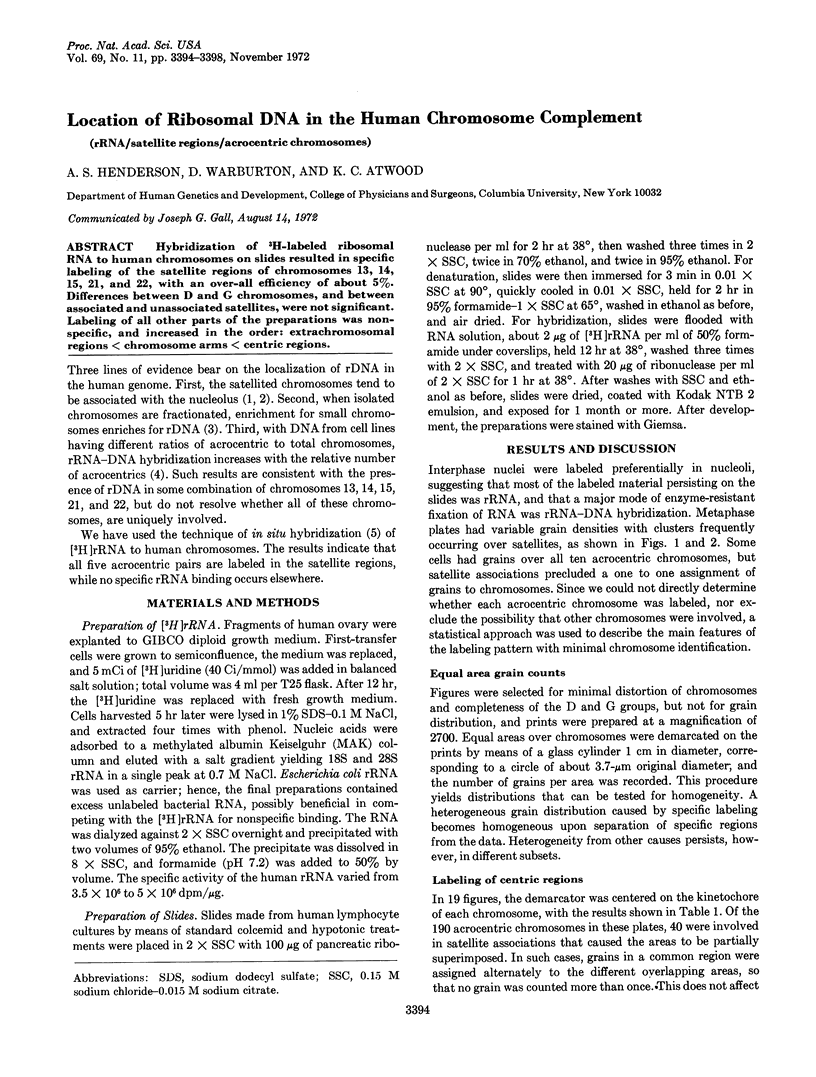
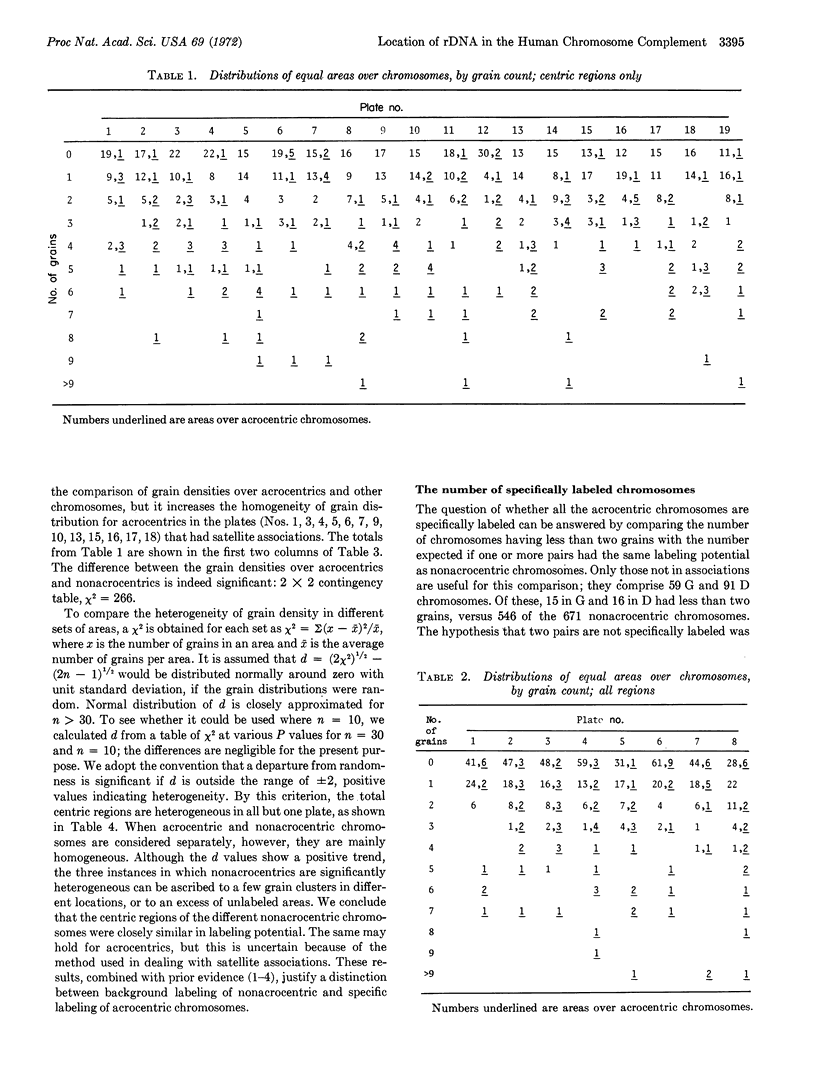
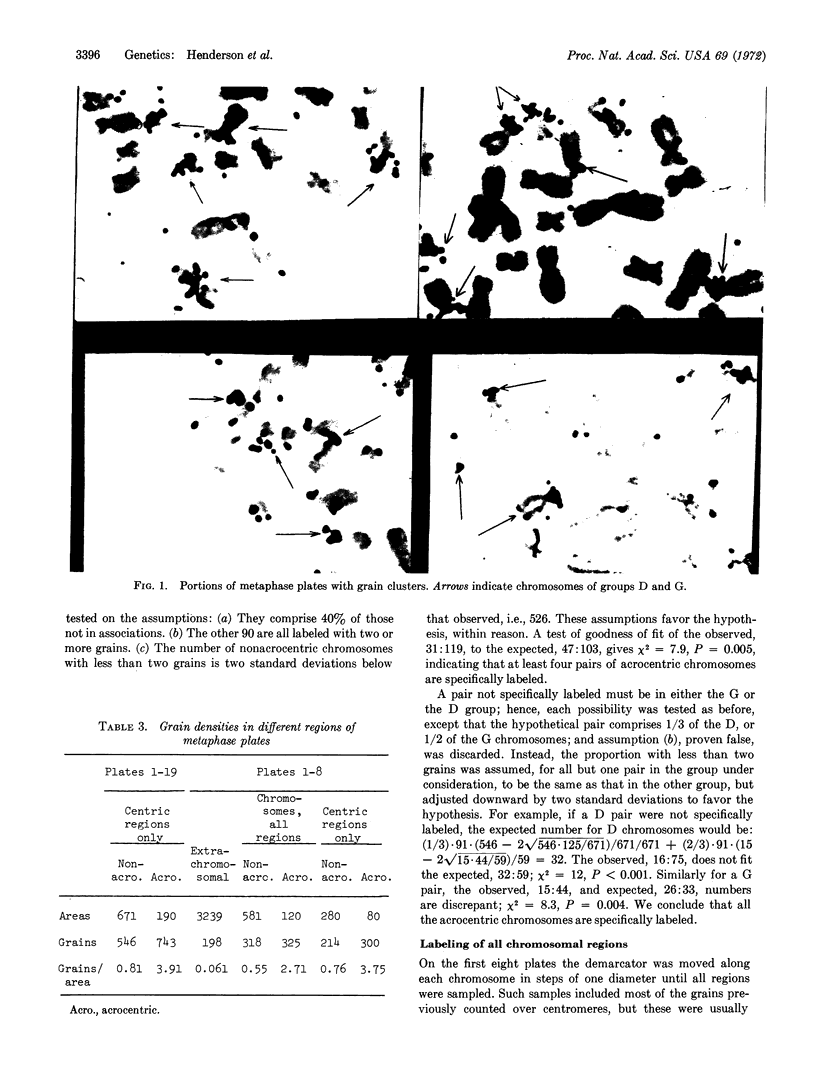
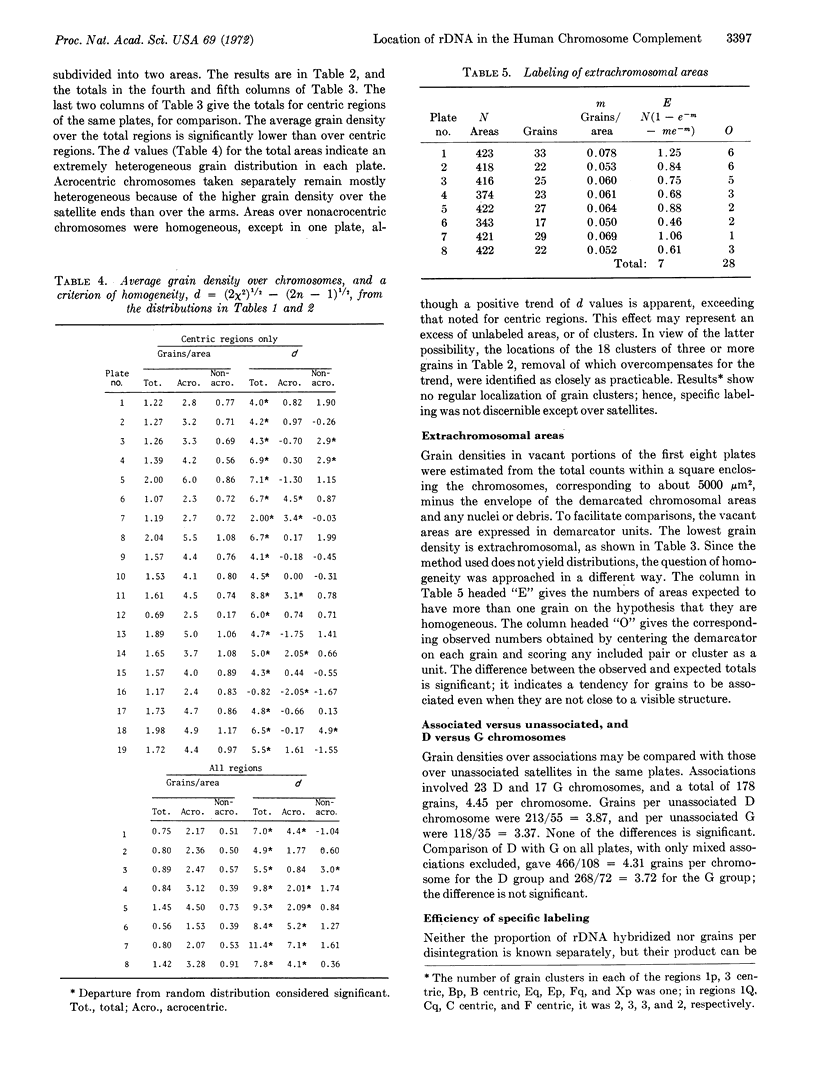
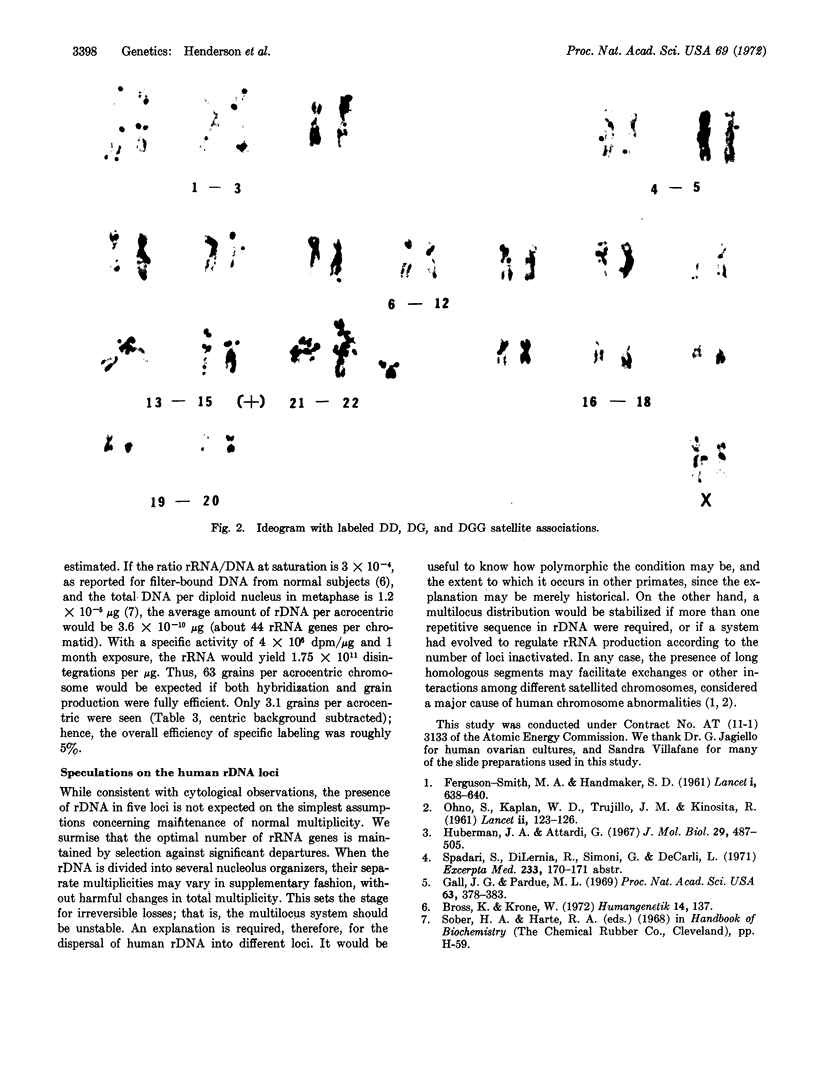
Images in this article
Selected References
These references are in PubMed. This may not be the complete list of references from this article.
- Bross K., Krone W. On the number of ribosomal RNA genes in man. Humangenetik. 1972;14(2):137–141. doi: 10.1007/BF00273298. [DOI] [PubMed] [Google Scholar]
- FERGUSON-SMITH M. A., HANDMAKER S. D. Observations on the satellited human chromosomes. Lancet. 1961 Mar 25;1(7178):638–640. doi: 10.1016/s0140-6736(61)91655-5. [DOI] [PubMed] [Google Scholar]
- Gall J. G., Pardue M. L. Formation and detection of RNA-DNA hybrid molecules in cytological preparations. Proc Natl Acad Sci U S A. 1969 Jun;63(2):378–383. doi: 10.1073/pnas.63.2.378. [DOI] [PMC free article] [PubMed] [Google Scholar]
- OHNO S., TRUJILLO J. M., KAPLAN W. D., KINOSITA R. Nucleolus-organisers in the causation of chromosomal anomalies in man. Lancet. 1961 Jul 15;2(7194):123–126. doi: 10.1016/s0140-6736(61)92647-2. [DOI] [PubMed] [Google Scholar]




